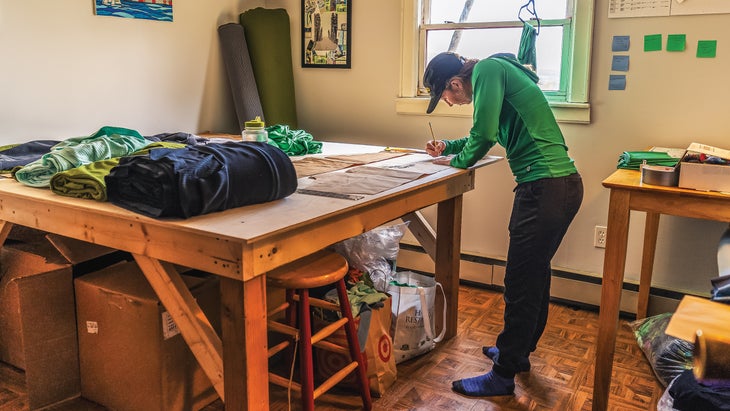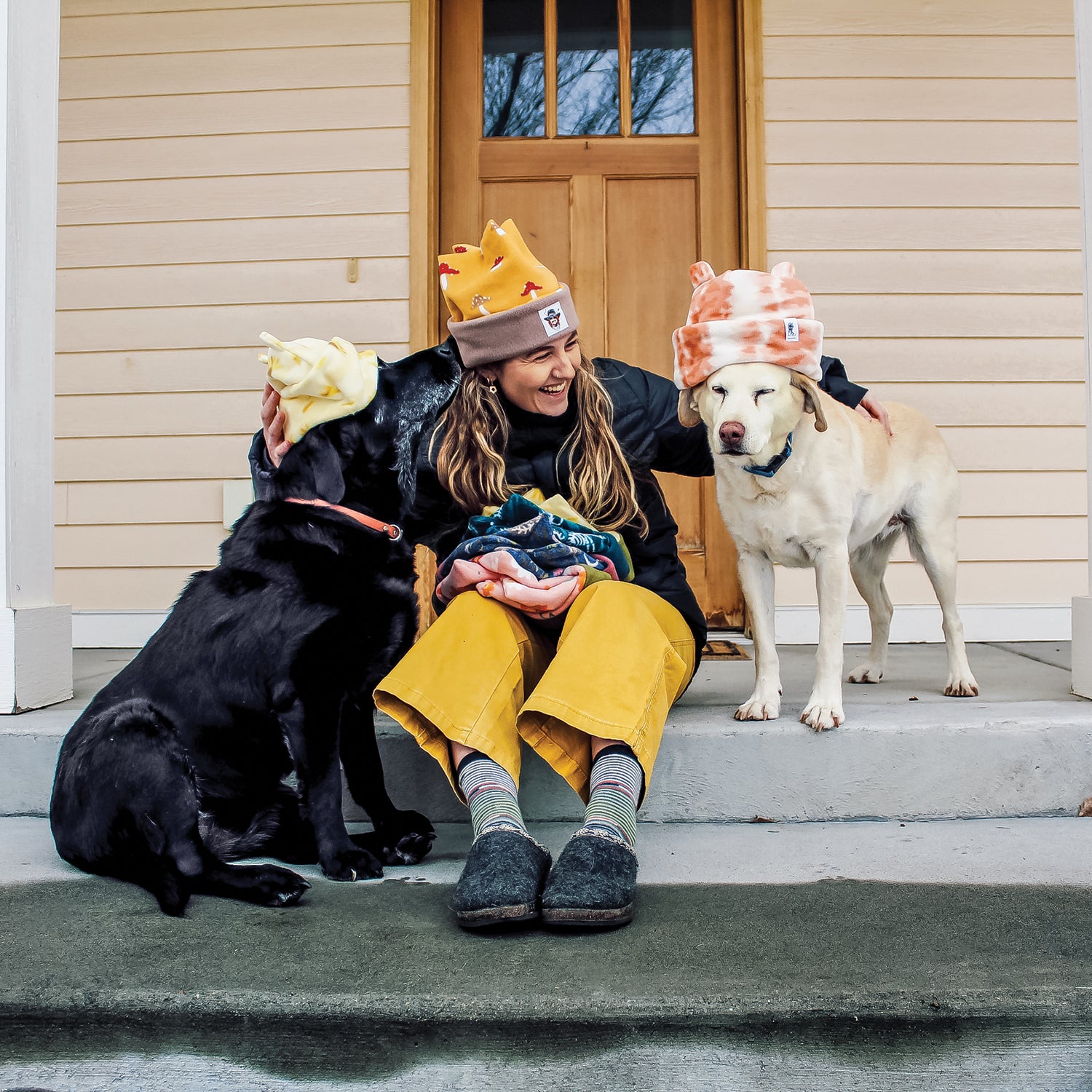Last Christmas, my younger sister, who lives in Bozeman, Montana, gave fleece beanies to my brother and his fiancée, who live in New York City. If you’ve been to a mountain town lately, you know the kind: plush, cozy, and shaped like a regal crown. The design is hot right now in a lot of ski destinations, and while I’m not sure how these hats play in Manhattan, they looked great when the happy owners recently visited my parents in Lake Tahoe, California.
The beanies were made by , a tiny Bozeman company, and they’re a good example of a recent trend: clothing and gear created by outdoor startups at a remove from design and production hubs like Seattle, Salt Lake City, and Portland, Oregon. Sophski is run by Sophie Hewitt, a 25-year-old skier from Maine who started making her own neck warmers several years ago to save money. She migrated to Bozeman, added hats to her line—the beanies described above, which go for $35, are called King and Queen—and now moves about 50 of them per month online and in stores.
“Once I started selling them in Bozeman, they became something that traveled by word of mouth,” Hewitt says. “They’re easy to sell in ski shops, and it’s easy for me to advertise on Instagram.”

Tiny businesses like Hewitt’s are thriving in small, outdoorsy locales across the country. According to Kelly Davis, director of research at the Outdoor Industry Association, based in Boulder, Colorado, trends are readily sparked in communities like Bozeman because the population is close-knit. During the pandemic, more young people than ever flocked to these places, holed up, and were ready to create.
“I am seeing innovative brands making all kinds of products and trying to do business in a different way,” Davis says. “Mountain towns in particular have attracted lots of talent in the past two or three years.”
Some of these small businesses are already well established, and they’ve benefited from small-town spirit. Lane Willson, the founder of a bike-bag brand called , says she never would have had the confidence to start her Leadville, Colorado, company back in 2012 if it weren’t for the local support she received. Each bag is custom-made—options include models for frames, handlebars, and seats—and range in price from $50 to $175. Initially, Willson and her husband made the bags for themselves, but friends persuaded her to sell them.
“This style of bag had become harder to find,” Willson says. “There were maybe two people doing it—one was going out of business, and the other had a nine-month wait.” Then a friend who owns a bike shop in town told her he could sell them with ease. Eleven years later, Willson’s team of 12 employees produce their bags in a factory located 60 miles south, in Salida. She says Oveja Negra has thrived because it listens carefully to feedback from the user community.

, based in Richmond, Vermont—a mountain town just outside Burlington that’s famous for ski touring and mountain biking—also uses customer feedback to determine new designs for technical apparel. It’s run solely by its founder, Caroline Patten, who started the business in 2020 after she noticed that locals lacked clothes that suited the humid (but not rainy) Richmond environment.
“In Vermont, we get a specific kind of weather—not quite as wet as in Washington or Oregon,” Patten says. “So I started making pieces that were a little more tailored to specific needs.”
One example is the ($104), a base layer specifically for ski touring. It’s breathable in the back and sleeves, and a little less porous in the chest, which is helpful for staying warm and dry in freezing temperatures. Recently, customers requested thumb loops, so Patten added them.
The hoodie might not work as well in wetter regions, but Patten doesn’t need it to. The focus on purpose-built products allows her, and other mountain-town makers, to thrive, and gives us tools to do the things we love in our favorite places. That’s the essence of mountain culture.


